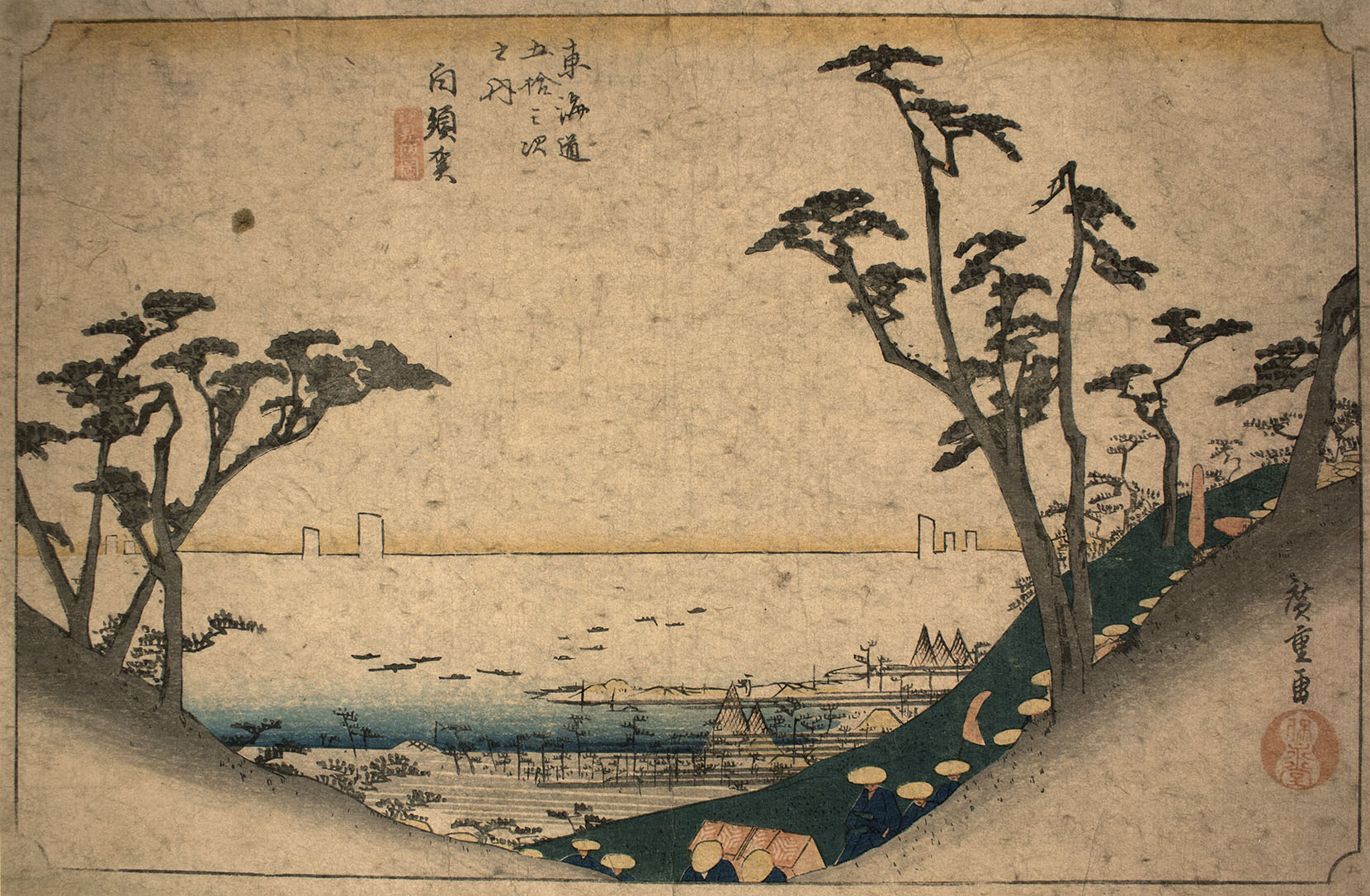Project Description
This print was made by Hiroshige Ando, a great Japanese printmaker famous for his landscape series and woodblock techniques. Hiroshige came from the Samurai class, and was charged with preventing fires in Edo Castle. This responsibility left him with much leisure time, and at the age of fourteen he started to learn traditional painting, which led to his printmaking. Depicted here is one of fifty-three rest stops of the Tokaido Road, which was the main transport artery of Japan before Western influence. With the printing of Hokusai’s Thirty-six Views of Mt. Fuji in 1831, a new movement occurred in Japanese prints that valued series printings of “famous views.” Hiroshige had already done series of prints depicting Edo, what we today call Tokyo. Every year, the Shogun in Edo would send a ceremonial gift to the Emperor in Kyoto, and the delegation would take the Tokaido. Hiroshige was chosen to participate in the gift giving one year, and the scenery spoke to him. Printmaking at the time was a complex industry, with the artist, woodblock carver, printer, and publisher all having equal roles. It was a long process to convince a publisher to go along with Hiroshige’s idea for a series. With thousands of travelers taking this road every year, Hiroshige’s prints would reach many people who had a familiarity with the Tokaido. Woodblock prints were used as early as the eighth century in Japan. In the 1700s, Japanese printmakers started using multiple woodblocks to achieve a range of color on a single sheet, rather than working in monochrome or painting by hand. Hiroshige’s woodblock printing was the ukiyo-e style, characterized by its well defined flat lines, depth of space, and attention to details, such as pattern, color, and line. This print exemplifies the ukiyo-e style and depicts a well-known location.
-Constantine Botimer, Class of 2019

